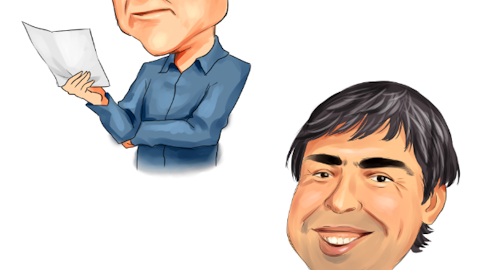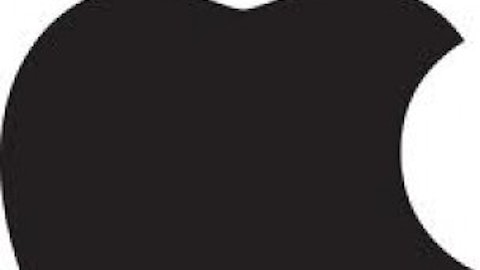When investors think of companies taken down by the rise of smartphones and tablets, they generally think about PC manufacturers like Hewlett-Packard and big box retailers like Best Buy.

To top of that bad news, CEO David Kirchhoff also tendered his resignation. Investors dumped the stock in a hurry, and shares plunged nearly 20% after the announcement, dropping close to the 52-week low.
A second-quarter slide
Prior to that big plunge, Weight Watchers International, Inc. (NYSE:WTW) reported earnings of $1.36 per share, a 2.21% increase from the prior year quarter, coming up $0.03 short of analysts’ expectations. Revenue declined 4% to $465.1 million.
The company’s newly appointed CEO, Jim Chambers, acknowledged that “current business conditions are challenging” and that the company will “start 2014 with fewer active members and therefore a lower earnings base.” In addition, CFO Nick Hodgkin blamed a “sudden explosion of interest” in free fitness apps and activity monitors for crushing Weight Watchers International, Inc. (NYSE:WTW)’ core business during the quarter.
Nothing ‘sudden’ about that explosion
Yet, shrewd investors, who have been watching the steadily intertwining relationship between the fitness and mobile tech industries, should realize that there’s nothing “sudden” about that explosion at all.
Apple Inc. (NASDAQ:AAPL) and NIKE, Inc. (NYSE:NKE) kicked off the revolution in activity tracking tech with the Nike+ FuelBand in January 2012. The FuelBand is a fitness bracelet that synchronizes to an iOS app on the iPhone that can be used to track daily physical activity, such as steps taken daily and the amount of calories burned. The app tracks performance over time, fueling a game-like experience in personal fitness, and positive progress is rewarded with NikeFuel points, which can be used to unlock achievements. The app also allows achievements to be shared across social networks like Facebook and Twitter, which encourages interaction and competition with friends across the Internet.
In fiscal 2012, NIKE, Inc. (NYSE:NKE)’s equipment division reported an 18% year-on-year increase in earnings as a direct result of FuelBand’s popularity. This paved the way for other competitors, such as FitBit, Motorola MOTOACTV, and Jawbone Up Rev B to enter the market.
In addition to these fitness bracelets and apps, an increasing number of free fitness tracking apps have also flooded the market. The Apple Inc. (NASDAQ:AAPL) App Store now has over 10,000 mobile fitness apps, such as heart rate monitors, calorie counters, and instructional exercise apps — many of which can be downloaded for free.
Weight Watchers International, Inc. (NYSE:WTW) also has apps for iOS and Android, but they can only be accessed by the company’s paid members, which severely limits their appeal.
Stuck in the past
Unfortunately, Weight Watchers International, Inc. (NYSE:WTW) is still stuck in its old business model of paid memberships. Customers purchase membership plans, which include frozen meal deliveries and fitness plans, and then choose to meet Weight Watcher consultants in person or through an online program.
In the past, this idea worked fairly well as an “all-in-one” solution to weight management. However, times have changed quickly, and increasingly connected individuals now favor the sense of self-accomplishment and competition that comes from Nike’s FuelBand and its similar products.
In other words, there was nothing “sudden” about the explosion in activity monitors and fitness apps. Weight Watchers management was simply looking in the wrong direction, and focusing more on its traditional competitors, NutriSystem Inc. (NASDAQ:NTRI) and Medifast, Inc. (NYSE:MED).
NutriSystem uses a similar system to Weight Watchers, selling monthly food packages which include breakfast, lunch, dinner, and desserts. It sells a weight management program separately. Last quarter, NutriSystem Inc. (NASDAQ:NTRI)’s revenue declined 21.7% year-on-year, although earnings improved 54.5%, indicating that it is also facing the same struggles that are dragging down Weight Watchers. However, since NutriSystem’s products and services are sold separately, its business model is more flexible than Weight Watchers. In addition, NutriSystem offers special programs designed for diabetics.
Medifast, on the other hand, sells weight management food products, such as pancakes and cookies, runs Medifast Weight Control Centers across the United States, and sells disease management products through its pharmaceuticals arm. Medifast, Inc. (NYSE:MED) has fared slightly better than Weight Watchers and NutriSystem, reporting year-on-year earnings and revenue growth of 8% and 48.7%, respectively.
The Foolish fundamentals
In conclusion, a look at the fundamentals also shows that expectations for Weight Watchers are quite low compared to NutriSystem and Medifast.
| Forward P/E | 5-year PEG | Price to Sales (ttm) | Debt to Equity | Profit Margin | 12-month price change | |
| Weight Watchers | 10.30 | 20.54 | 1.19 | N/A / total debt: 2.38B | 13.35% | -14.5% |
| Nutrisystem | 25.98 | 2.85 | 0.98 | No debt | 0.95% | +19.1% |
| Medifast | 12.67 | 1.02 | 1.02 | 0.94 | 4.90% | -2.9% |
| Advantage | Weight Watchers | Medifast | Nutrisystem | Nutrisystem | Weight Watchers | Nutrisystem |
Source: Yahoo Finance, 8/5/2013
NutriSystem is surprisingly the strongest fundamental pick of the three, considering its clean balance sheet and strong price performance over the past year. Even though Weight Watchers has the most robust margins, it also has a horrible PEG ratio that suggests negative earnings growth for years to come.
Weight Watchers’ losses will keep piling up as people become more proactive in their fitness routines through the use of FuelBands and fitness apps. Weight Watchers will probably try to counter with free or enhanced versions of its mobile apps, but they will be too insignificant to bring back its lost members. Therefore, there’s not much reason to own Weight Watchers — it’s just another company that got left behind the technological curve, and just like Hewlett-Packard and Best Buy, it must rethink its strategy from the ground up to get back in the game.
Leo Sun owns shares of Apple. The Motley Fool recommends Apple and Nike. The Motley Fool owns shares of Apple and Nike.
The article A Smartphone-Induced Crash Diet Crushed This Company’s Bottom Line originally appeared on Fool.com and is written by Leo Sun.
Leo is a member of The Motley Fool Blog Network — entries represent the personal opinion of the blogger and are not formally edited.
Copyright © 1995 – 2013 The Motley Fool, LLC. All rights reserved. The Motley Fool has a disclosure policy.



